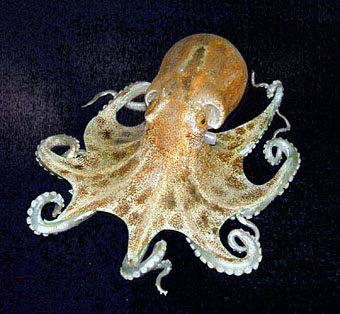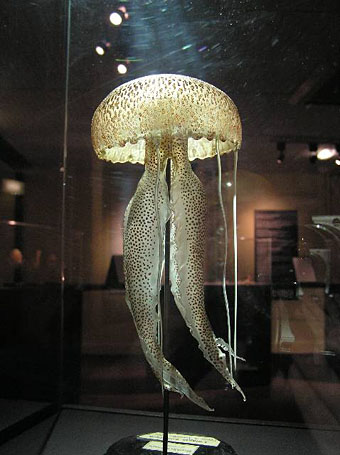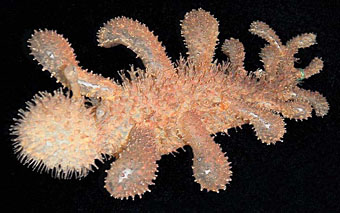
Not the play by Tennessee Williams, rather the glass sculptures of sea creatures by Leopold and Rudolf Blaschka.
Leopold (1822–1895) and Rudolf (1857–1939) Blaschka were a father and son partnership, originally from Bohemia. Their work making spectacular glass models of natural history objects began in 1857, in Germany. Rudolf joined his father in business in 1876 and after 1880 there were so many orders for their glass models that this became their sole business.
The Blaschkas are best known for their glass flowers, made from 1886 to 1936. Many of these are now displayed in the Botanical Museum of Harvard University. After his father’s death in 1895, Rudolf continued to make glass flowers. However, during their lifetimes they also made many accurate models of mainly marine animals. Dying with no children, their glass-working secrets were not passed on.

(More photos like this here.)
Looking at these sculptures I was curious to know whether they worked from real specimens or not. They may have used some for reference but I suspected many of their works were based on the famous colour plates of sea creatures, radiolaria, and so on, in Ernst Haeckel’s Kunstformen der Natur (1899–1904). A quick search confirms this, Haeckel was consulted, as were earlier scientific studies such as Philip Gosse’s Naturalist’s Rambles on the Devonshire Coast (1853) and GB Sowerby’s Popular History of the Aquarium of Marine and Fresh-Water Animals and Plants (1857).

(More photos like this here.)
Nancy Marie Brown writes about the Blaschka’s glass flowers (and what’s known of their working methods) here.
Previously on { feuilleton }
• The Bowes Swan

Gorgeous Work! Amazing! 8)